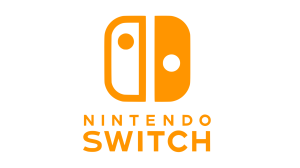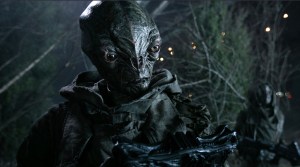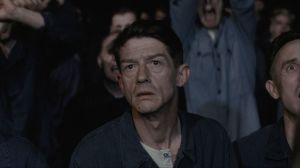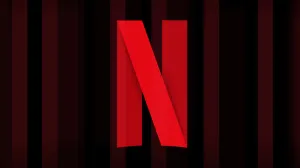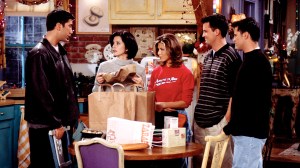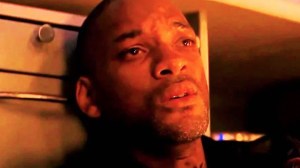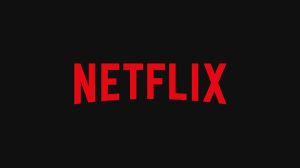Earlier this month, Jacob Johnston — a veteran production designer with credits on several Marvel movies, including the first two movies in the Avengers and Guardians of the Galaxy franchises, made his feature film directorial debut with Dreamcatcher. Not related to the Stephen King movie of the same name, this movie center son a pair of estranged sisters who head to an underground music festival, where everything goes to hell. The film tells the story of the fallout from what the director describes as “the gruesome events of the festival.” It also touches on how those events have a ripple effect that reaches out to the sisters’ friends and loved ones.
Videos by ComicBook.com
The film, which is now available to rent or own via digital platforms, takes the slasher genre out of spaces where you have plenty of room to move — the suburbs, summer camp — and takes it into a mob scene. Which would have felt claustrophobic and…off…even if we hadn’t just spent a year being vaguely uncomfortable being in crowds.
Johnston joined ComicBook to discuss the movie, which stars Niki Koss, Zachary Gordon, and Lou Ferrigno, Jr., among others.
For people who haven’t seen the run-up, what’s your elevator pitch for the movie?
It’s about two sisters, two estranged sisters that come together at this underground music festival where something terrible happens in the next 48 hours or the fallout of this gruesome events from the festival. So it’s the 48-hour aftermath of this event, and how it trickles up to the ensemble cast.
The killer has a great and a really disorienting design. How much time do you have to spend making sure that that’s right?
You’re absolutely right. It’s any movie where you have a figurehead, whether it’s Jason, Freddy, Michael, Leatherface. The iconography of that character has to work. They have to buy it, and it has to also make sense. And I think it’s another reason why EDM was such a great backdrop for a film like this, because it allowed me narratively to just go… The audience will buy it because you have characters like Deadmau5 and Marshmallow, or Daft Punk, who wear masks.
And it’s not an egregious thing for the audience to buy into, but it has to be cool enough that if this person is spinning music, that it also is a bind… But in the right lighting, it could be very, like you said, disarming or freaky. So, it was both of those things. It’s making sure that it really was not silly, but it also was very practical in terms of how it fits into the narrative. And whoever’s going to put on this mask and kill people, we don’t have to do a 20 minute mythos scene of, why does the character look the way it does? So, yeah, it was definitely important both in narrative and making sure the audience doesn’t go, “Oh, this is dumb.”
That’s right! It isn’t the hockey mask; it’s not inherently built into this one individual’s trauma or something. So you think that opens up more possibilities if you ever wanted to follow it up?
100%. Once you’ve created the facade of a character, it’s like…when Ghostface is dead, it can become anybody. So being able to translate that, I think, is super exciting, and it doesn’t feel like a cash grab. It’s not just like, “Well, we got to reinvent the same story and re-skin it, and tell it again” You can go in a lot of different directions, and without spoiling anything, I do believe that the movie sets up naturally a place you could go afterwards in a lot of different ways.
Besides cracking the look of the killer, is the next most important thing finding a justification for the setting, so that you have a pool of potential victims and supporting players ready at hand?
I think when you look at it, you have to go, “How did John Hughes handle his ensembles?” I’m not just looking at horror movies, because there are a lot of ’90s horror movies which obviously were a big inspiration for this, that did feature an ensemble, and more often than not, you had two of those characters in those movies who were really interesting. And the rest of them were kind of interchangeable, or people who died early or ended up on the cutting room floor. It’s like, how do you marry those two things? Because those are the stories that are really exciting to me — where it’s like, let’s have really dense, psychologically-damaged or psychologically complex characters. And then we’re going to put them in this backdrop of intense trauma and see what happens.
It’s like shaking a Coke bottle and seeing what happens, but making sure that nobody just feels like they’re acting, that we’re not trying to just create these charicatures, or these very just typical archetypes. I really tried to look at the archetypes of characters from things like Macbeth and from things like Dr. Faustus, and how those character oberate. They’re much more multifaceted in these old Victorian plays and Greek tragedies, and finding ways to pepper that in without losing the fun became a little game. But we’re also in a horror movie, so we need to keep the pacing going. And the original cut was like two hours and 15 minutes. So it was like shaving those character moments that maybe went on a little too long, or maybe didn’t influence the story overall in a big way.
But definitely, yeah, it’s a balancing act between those set pieces and also these reprieves of character moments.
Having the sisters involved also messes with the dynamic of a lot of horror movies because there’s a totally different set of stakes if one of them doesn’t make it.
You’re absolutely right. I’m not going to say that I reinvented the wheel because it hadn’t been done, but it’s like, how do you approach the setup where it’s not two couples and then the other friend? I feel like that’s a common setup, but we’re getting in this world where we have things like a movie like Happy Death Day, where you can have a centralized female character who has some friends around her that are not all just romantic. And I think there’s a more universal theme if you use siblings personally, because not everybody has one, but everybody has a family member that they can relate to that they may or may not have become estranged from at some point in their life. There had been some sort of falling out, so they could find a way to relate to the audience with our two centralized characters and not make it about how we also have to bake in some romance while also making it, trying to be about them finding their own identity. I think makes it a little bit more relatable.
Part of the thing that really is interesting about setting this at this EDM is that the people go in expecting to be blown away. They expect this to be a big, cool, exciting night. It almost feels in the same vein as Halloween, where you’re not getting what you bargained for, but they’re already keyed up when they walk on screen. What’s appealing about having people walk in and already be in that zone and at their craziest selves?
I look at something like Psycho, and I think you look at that character, where in the beginning we established this woman who’s at a job that she’s not appreciated for. She’s at her wit’s end with things, she’s in this sorted romance. In the first 20 minutes of that movie, we really get this character and we’re following it. It feels you’ve created the connection and it’s sympathy to that person because it’s like, oh, she’s more than just a woman. She’s all of these different layers. And so it was important to me to try to find that set up. So when we get to the 30 minute mark, 30-ish minute mark, and you can turn it and say, emotions were already high or we’re in a place where everything’s not just like hunky dory and we’re all best friends.
Because I don’t think that’s very true to life especially when you go to these events. People get agitated, because it’s hot. People are mad because it’s too smoky. And even if you’re friends, so if you can find a way to relate to the audience and be like, “This is the story we’re telling, it’s not just going to be blood and guts. We’re going to try to create a stage where the characters are going to come front and center.” Hopefully it puts a different lens on it. So they’re not just expecting it to be a string of chase and murder sequences.
It was the thing I tend to ask people is what’s deceptively difficult. What’s a shot where nobody would know like, “Oh, we spent four hours on that nonsense.”
A shot that was deceptively challenging was actually doing the bit in the shower when the two sisters faces line up in the reflection of the shower door. It was such a time-based thing that called for a certain precision – and the space we were working in was pretty tight. It was similarly difficult to do the bathroom stall stuff with Raye at Cataclysm. We built that bathroom in one of the empty rooms at the warehouse – but the stalls were pretty tight – and we were shooting on a full-body Alexa. Which made for getting things handheld in tight spaces quite difficult.

